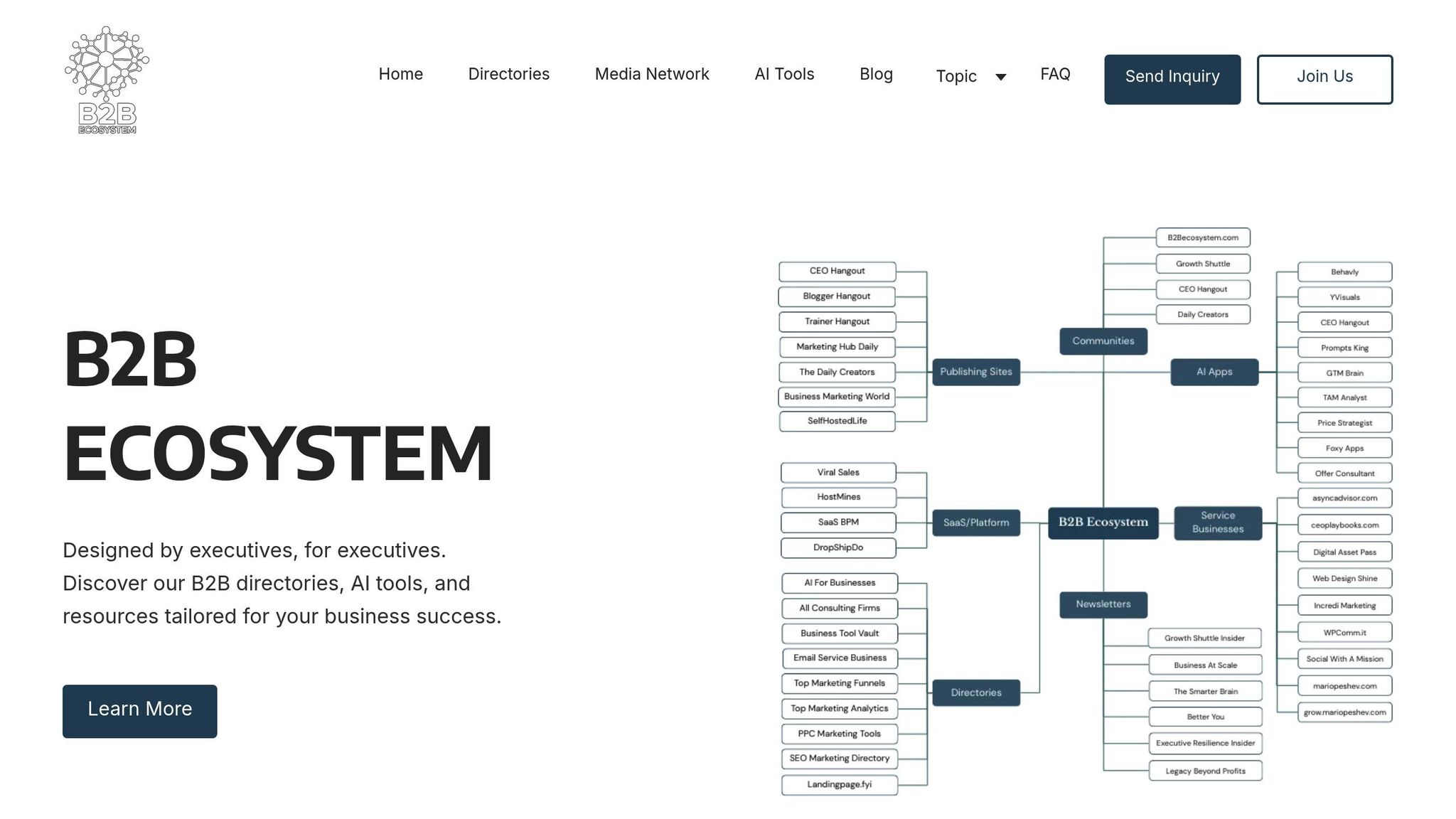Emerging markets present massive growth opportunities, but success hinges on localization strategies that go beyond simple translation. Here's why this matters:
- 65% of consumers prefer native-language content, and 40% avoid websites they can't understand.
- Proper localization can boost sales by 40% to 50% while building trust and long-term loyalty.
- It's not just about language - localization involves tailoring visuals, pricing, product features, and even technology to match local preferences.
Key takeaways include:
- Focus on language: Translate technical content precisely and adapt marketing materials emotionally.
- Adjust content: Use local imagery, messages, and timing to connect with audiences.
- Optimize technology: Adapt apps, websites, and payment systems for local infrastructure and preferences.
- Partner with local experts: They understand the nuances of language, regulations, and consumer behavior.
Understanding Emerging Market Characteristics
What Are Emerging Markets
Emerging markets refer to nations that are rapidly industrializing and improving living standards. These aren't stagnant economies - they're actively evolving, with growing middle classes and infrastructure striving to keep up with increasing demand.
The pace of change in these markets is remarkable. Institutions like the IMF and MSCI identify around 20–24 countries as emerging markets. What distinguishes these economies is their above-average growth rates, deeper integration into global markets, and expanding consumer bases.
Take growth projections as an example: India is on track for a 6.2% GDP growth in 2025, while South and Southeast Asia are forecasted to grow at 5.7% and 4.1%, respectively. Similarly, Sub-Saharan Africa's GDP is set to rise by 3.8%, North Africa by 4.0%, and Central America by 3.8%. In 2023, half of the world's internet users were in Asia, and millions are joining the middle class each year - many of them young, tech-savvy, and eager to engage with brands.
"Emerging markets experience rapid growth, reshaping themselves as they go and building new industries, cities, and customer bases in the process. These are the places where global momentum is concentrated." – Stripe
One standout feature of emerging markets is their leapfrogging approach to technology. Many of these regions bypassed traditional infrastructure and jumped straight into mobile-first and digital-first solutions. For instance, Africa and Southeast Asia are now at the forefront of mobile payments and fintech. This trend demands localization strategies tailored to mobile-first users and innovative digital ecosystems. These swift economic and technological shifts create unique localization challenges that vary from market to market.
Key Factors That Affect Localization
Emerging markets come with their own set of hurdles, including infrastructure gaps, political instability, and diverse cultural landscapes. Unlike mature economies with stable patterns, these markets are often unpredictable, with trends that can change rapidly.
Infrastructure gaps are a significant challenge. While these markets are growing quickly, they often lack the regulatory frameworks and market efficiencies that developed economies take for granted. Political and regulatory instability adds another layer of complexity, as emerging markets are more prone to risks like political upheavals, currency fluctuations, and regulatory uncertainty.
The diversity across these markets is another critical factor. Each region has distinct language variations, cultural norms, and consumer habits. Strategies that succeed in India's urban centers might not resonate in rural Brazil or metropolitan Nigeria. Economic disparities also play a role, as purchasing power can vary widely both between and within these markets.
"In the dynamic realm of technology and entrepreneurship, investing in emerging markets presents a distinct set of opportunities and challenges compared to established markets." – Ajim Capital
The Role of Market Research
To navigate these complexities, thorough market research is essential. The rapid changes and unique traits of these economies mean that relying on data from developed markets can lead to costly missteps.
Detailed market segmentation, such as Total Addressable Market (TAM) analysis, helps identify diverse consumer groups. This is especially crucial in emerging markets, where income levels, digital adoption, and consumer behaviors can differ significantly even within the same country.
Behavioral analytics offer real-time insights into how users interact with products, while competitive intelligence reveals key cultural and regulatory factors. Going beyond translation, cultural and linguistic research uncovers the deeper contexts that drive consumer decisions, communication styles, and brand perceptions. For instance, understanding how colors or symbols may be interpreted differently can help brands avoid cultural missteps.
Additionally, understanding local infrastructure and technology trends - like internet speeds, preferred devices, and popular payment methods - is critical for creating localized strategies. AI-powered tools can analyze vast amounts of local data, helping businesses identify market entry points, adjust pricing to match local purchasing power, and craft offers that resonate with specific audiences. These insights are the foundation for localization strategies that truly connect with local consumers.
Localization for succeeding in emerging markets [Vinay Charaniya, Google]
Core Components of a Successful Localization Strategy
Addressing the unique challenges of emerging markets requires a thoughtful approach. These core elements lay the groundwork for a localization strategy that connects with local audiences while staying true to your brand.
Language Adaptation
Deciding how to handle language is key. For technical content, a literal translation works best to ensure accuracy, while marketing materials often require transcreation - a process that captures the emotional and cultural essence of your message. For example, technical documents, legal texts, and product specifications demand precision, but marketing campaigns thrive on creativity and cultural relevance.
Audio-visual content also needs careful adaptation. Depending on local preferences, you might choose subtitles or dubbing. This is especially important in regions with varying literacy levels or a strong preference for spoken content. Additionally, regional language differences matter - a Spanish translation for Mexico won’t necessarily work for Argentina, just as English for Nigeria differs from English for India. Tailored versions for specific regions ensure your message lands as intended.
Finally, have native speakers from the target region review your content. This ensures not just linguistic accuracy but also cultural sensitivity, helping your content feel both authentic and locally relevant.
Local Content Adaptation
Connecting with your audience requires more than just words. Understanding local values, traditions, and social norms is essential. For instance, content that resonates in individualistic societies might not work in collectivist cultures, and vice versa. This affects everything from storytelling techniques to the imagery you use.
Visuals should reflect local realities - think about demographics, clothing styles, architecture, and daily life. Brands that invest in locally relevant imagery are more likely to build trust and engagement.
Timing is another crucial factor. Beyond major religious holidays, consider local festivals, school schedules, and harvest seasons. Aligning your content calendar with these rhythms can make your campaigns feel more in tune with your audience.
Even seemingly small details, like color symbolism, can carry big implications. For example, red signifies luck in China but might convey danger elsewhere. Understanding these nuances helps avoid cultural missteps that could harm your brand’s image.
To further build trust, showcase local success stories. Highlighting customers, partners, or use cases from the target region makes your content relatable and credible. These cultural adjustments naturally lead into the technical changes needed for diverse digital environments.
Technical Adaptation
Adapting your digital presence to local preferences is just as important as linguistic and cultural adjustments. Start with user interfaces - some markets favor dense layouts packed with information, while others prefer clean, minimalist designs. For mobile-first regions, interfaces may need a complete redesign to suit smaller screens and touch navigation.
Platform preferences also vary widely. While Facebook might dominate in one area, platforms like WeChat, WhatsApp, or local networks could be more effective elsewhere. Knowing where your audience spends their time online is critical for reaching them.
Accessibility must also meet local standards. For example, while ADA compliance is the norm in the United States, other markets may have their own guidelines or expectations for inclusive design.
Consider technical constraints as well. In regions with slower internet speeds or high data costs, high-resolution videos might not be practical. Instead, focus on lightweight formats that perform well under these conditions. Similarly, e-commerce systems should align with local payment preferences, such as mobile payments over credit cards.
Finally, hosting content locally can improve both performance and compliance with data regulations. Faster load times and adherence to local data laws create a smoother user experience and build trust with your audience.
Best Practices for Implementing Localization
Successfully implementing localization involves thorough planning, collaboration with knowledgeable local experts, and establishing effective feedback systems.
Working with Local Experts
Localization thrives on the insights of local experts. It's essential to collaborate with professionals who understand both the language and the specific nuances of the industry you're entering. This goes beyond mere fluency; it's about grasping the cultural and regulatory context.
For instance, a financial services company expanding into Brazil would need someone familiar with Portuguese and the intricacies of local banking regulations, not just a translator. Similarly, cultural consultants play a vital role in navigating social norms, business etiquette, and consumer habits. In diverse countries like India or Nigeria, regional differences within the same nation can be as critical as understanding the broader national culture.
Building long-term partnerships with local experts fosters a deeper understanding of your brand and the market. These relationships often lead to more consistent and effective localization efforts as your presence grows. Establishing advisory boards with local business leaders and prospective customers can also provide invaluable input. These groups help you adapt to shifting market conditions and ensure your localization efforts resonate authentically rather than feeling forced or out of place.
Testing and Feedback Loops
Localization strategies often evolve once they're tested in the real world. Early and ongoing testing with local audiences can uncover mismatches between your assumptions and actual market needs. This iterative process should begin as soon as possible and continue throughout your market entry.
Define clear processes for gathering input - who provides it, how it’s collected, and when. Start small with focus groups during the development phase, and later expand to broader user testing as your content takes shape. Digital tools make it easier to collect feedback quickly and adjust accordingly.
Use multiple channels to gather diverse perspectives:
- Social media monitoring provides unfiltered reactions to your content.
- Surveys capture structured insights from a wide audience.
- Customer service interactions often reveal practical issues that more formal testing might overlook.
The real key is acting on the feedback. Establish clear systems for evaluating input, prioritizing necessary changes, and implementing updates. Documenting what works and what doesn’t will build a knowledge base that improves future localization efforts.
Regular reviews are critical to staying relevant, especially in dynamic markets. What worked six months ago might already feel outdated. By conducting quarterly reviews of localized content, you can ensure it remains fresh and aligned with current market trends.
This iterative approach ensures your brand integrates seamlessly with local customs while staying responsive to change.
Balancing Brand Identity with Local Relevance
A major challenge in localization lies in striking the right balance between maintaining your core brand identity and adapting to local preferences. The goal isn’t to reinvent your company for each market, but to present your brand authentically in ways that resonate locally.
Preserve your core brand elements while adapting supporting aspects to fit local needs. For example, visuals and messaging can be tailored to reflect local tastes without compromising your brand’s essence. Some markets may prefer straightforward, benefit-driven messaging, while others might respond better to storytelling that builds emotional connections.
Creating market-specific brand guidelines can help maintain consistency. These guidelines should outline approved adaptations, ensuring that local teams have clear boundaries while allowing flexibility. This not only ensures alignment across markets but also helps new team members quickly understand localization strategies.
A great example of this balance is the B2B Ecosystem. While offering consistent core services globally, the platform adjusts its AI tools and consulting strategies to address specific regional challenges and regulatory requirements. This approach keeps the brand relevant without diluting its identity.
sbb-itb-01010c0
Tools and Resources for Localization
Once you’ve defined your localization strategy, the next step is to implement it effectively. Using the right tools can make a huge difference, helping you streamline processes and maintain consistency across various markets. Today, localization efforts often rely on a mix of AI-powered platforms, expert networks, and specialized service providers to tackle the unique challenges of entering emerging markets.
AI-Powered Localization Tools
Artificial intelligence has transformed how localization is done. By leveraging machine learning, generative AI, natural language processing, and neural machine translation, these tools deliver results that are both precise and sensitive to local cultural nuances. In fact, 88% of content decision-makers are already using generative AI for translations. The market for AI-powered localization tools, currently valued at $5 billion, is expected to grow to $25 billion by 2033, with an annual growth rate of 25%.
These tools excel in several areas critical to localization strategies for emerging markets. They use translation memory and brand-specific terminology databases to ensure consistency while processing content much faster than traditional methods. What used to take 4–6 weeks can now be done in significantly less time, reducing manual localization costs by as much as 60%.
A hybrid model - combining the speed and efficiency of AI with human oversight - offers the best results, especially for content where quality and cultural accuracy are key. Beyond translation, modern AI tools handle tasks like quality assurance, terminology management, real-time multilingual communication, localization testing, content optimization, regional adaptation, and workflow automation.
While AI tools play a crucial role, platforms like The B2B Ecosystem offer additional resources to support market entry and localization.
The B2B Ecosystem as a Resource

The B2B Ecosystem is a powerful platform for businesses looking to localize in emerging markets. As a digital media network and holding company, it offers a range of tools and services to simplify market entry and localization efforts.
The platform’s AI tools assist with market entry strategies, including total addressable market (TAM) analysis and go-to-market planning that incorporates localization from the start. Its advisory services connect businesses with experts who understand both the challenges of localization and the dynamics of emerging markets. These consultants help align localization efforts with broader business goals, ensuring measurable growth. Additionally, its directories feature pre-vetted partners with proven expertise in specific regions, saving time and reducing risks when selecting providers.
The platform also provides access to digital publications and active communities, offering ongoing insights into market trends and localization best practices. For companies aiming to expand into new markets, The B2B Ecosystem simplifies access to research, planning tools, implementation partners, and continuous optimization - all within one integrated platform.
For content adaptation that requires a more hands-on approach, specialized service providers are essential.
Media Localization Service Providers
Media localization agencies bring the expertise needed to adapt content for different markets. They handle everything from text translation to visual and audio adjustments, ensuring that all elements align with local cultural norms.
Technical adaptations might include formatting changes, such as right-to-left text for certain languages, or integrating local payment gateways. When selecting a provider, it’s important to choose one with experience in your target market and, ideally, expertise in your specific industry. For instance, an agency with experience localizing fintech applications in Southeast Asia will be better equipped to handle the region’s regulatory requirements and user preferences.
Professional providers stand out through their quality assurance processes. Look for agencies that involve native speakers, cultural consultants, and thorough technical testing in their review stages. Many also offer project management tools for real-time updates and collaboration.
Over time, these agencies can evolve into strategic partners. By becoming familiar with your brand voice, technical needs, and market priorities, they help ensure consistency across markets. Many successful businesses build long-term relationships with a select group of providers, creating a reliable network that adapts to emerging technologies and shifting market trends.
Measuring and Improving Localization Success
To make localization efforts effective, you need to track how well they’re working. Clear metrics help you see where you're succeeding and where there's room to grow. By focusing on measurable outcomes, you can refine your approach and stay competitive in evolving markets.
Key Performance Indicators (KPIs)
When it comes to localization, picking the right KPIs is critical. These metrics help you measure how well your content connects with local audiences and whether it's driving growth in new markets.
Engagement rates are a good starting point. Metrics like time spent on localized content, click-through rates, and social media interactions can indicate how well your content aligns with local preferences. If people are engaging deeply, it's a sign your content resonates.
To measure market growth, keep an eye on audience expansion in specific regions. Look at new user acquisition numbers, subscriber growth, and market penetration rates. These figures reveal whether your localized content is successfully attracting new audiences.
Engagement metrics like video watch-through rates or page scroll depth can be early warnings of content performance issues. If people aren’t finishing videos or scrolling through pages, it might mean your localization efforts need tweaking.
Revenue impact is another key measure. Track conversion rates, average order values, and customer lifetime value in localized markets, and compare these to your baseline markets. This will show how your localization efforts are affecting the bottom line. Customer-focused metrics like satisfaction scores and Net Promoter Scores (NPS) can also highlight cultural nuances that numbers alone might miss.
Lastly, cost efficiency matters. Metrics like cost per acquisition and return on localization investment can help you determine whether your budget is being used wisely across different markets.
Setting Up Feedback Loops
Feedback is essential for keeping your localization strategy aligned with audience needs and market changes. Collecting feedback systematically ensures you can adapt quickly.
Direct feedback tools like surveys, focus groups, and interviews are great for understanding how culturally relevant and effective your content is. Real-time feedback methods, such as in-app tools, social media monitoring, and analyzing comments on localized content, allow you to spot issues or opportunities as they arise.
Input from local teams is equally valuable. Regional employees, partners, and consultants often have a better pulse on market trends and cultural shifts. Regular check-ins with these stakeholders can provide insights that data alone might not reveal.
A/B testing is another powerful tool. By testing different messaging styles, visuals, or cultural elements, you can see what works best in each market. Documenting these outcomes ensures your future localization decisions are based on proven results.
Seasonal feedback is also critical. Automated alerts can help you quickly respond to changes during key local events, holidays, or cultural moments.
Comparing Methods and Market Outcomes
Once you’ve established a solid feedback system, you can start comparing localization strategies across different markets. This helps you figure out what works best and where resources should go.
Each localization method comes with trade-offs. Some markets might prefer subtitled content, while others respond better to dubbed versions. Similarly, the type of content you produce matters - video might excel in regions with strong mobile internet access, while text could be better for areas with limited bandwidth.
Performance across channels also varies. Compare how well your content does on platforms like social media, messaging apps, or traditional media. Tracking engagement and conversion rates on these channels can help you fine-tune your distribution strategy. Seasonal trends, like holidays or weather changes, can also reveal opportunities to optimize your content.
Competitive analysis adds another layer of insight. By benchmarking your performance against competitors, you can set realistic goals and find ways to stand out. Evaluating the cost-effectiveness of different localization methods can help you decide whether a higher upfront investment could lead to better results in the long run.
This data-driven approach ensures your localization strategy stays dynamic, helping you grow sustainably as markets evolve.
Conclusion: Growing Through Localization
Localization is the key to forming genuine connections in emerging markets and fueling global business growth. When executed thoughtfully, it becomes a driving force that reshapes how companies expand across borders.
At its core, effective localization starts with a deep understanding of the market and adapting language, tone, visuals, and messaging to align with local preferences. Every emerging market has its own set of hurdles, from unique consumer habits to specific technological challenges. Technical factors like mobile optimization and bandwidth availability can significantly influence your success in regions with varying infrastructure.
The best localization strategies strike a balance between maintaining global brand identity and embracing local relevance. This ensures your overarching message remains consistent while allowing room for cultural nuance. Collaborating with local experts - whether they’re regional teams, cultural advisors, or content creators - provides insights that data alone can’t uncover. It’s this thoughtful combination of consistency and adaptability that forms the foundation for successful global growth.
AI-driven tools and platforms, such as The B2B Ecosystem, simplify translation and content adaptation, especially when paired with regional expertise. Together, they streamline the process of tailoring content to meet local needs.
To gauge the success of localization efforts, it’s essential to track the right metrics. Engagement rates, market penetration, and revenue growth reveal whether your content is resonating with new audiences. Feedback loops also play a crucial role, helping you refine strategies as market conditions evolve.
Localization isn’t a one-and-done effort - it’s an ongoing commitment to staying relevant in dynamic markets. Consumer preferences shift, cultural trends evolve, and staying competitive demands continuous adjustments based on performance data and audience feedback. Businesses that treat localization as an investment, rather than a project, position themselves for long-term success.
For companies willing to invest the time and resources to understand and genuinely serve emerging markets, the potential rewards are immense. By approaching each market with respect, patience, and a focus on delivering real value, businesses can unlock growth opportunities that span the globe.
FAQs
How can businesses maintain their global brand identity while adapting to local markets?
To maintain a strong global brand while connecting with local audiences, businesses need a core brand framework. This framework should include essential, unchanging elements like the brand's values, visual identity, and messaging. These core aspects provide consistency across all markets. At the same time, local teams should have the flexibility to tailor strategies to fit regional trends, cultural differences, and consumer behaviors. This approach allows campaigns to feel relevant locally while staying aligned with the brand's overall identity.
Incorporating data-driven insights and real-time consumer feedback can help fine-tune this balance. By regularly analyzing local preferences and market shifts, businesses can stay aligned with their audience’s needs while maintaining brand consistency. This dual focus strengthens connections with diverse markets and helps the brand remain relatable.
What challenges do companies face when localizing for emerging markets, and how can they address them?
Companies face several hurdles when adapting to emerging markets. These include language barriers, differences in local customs, infrastructure gaps, complex regulations, and economic challenges. Such factors can make it tough to resonate with local audiences and meet their specific needs.
To tackle these issues, businesses should prioritize comprehensive market research to gain insights into local traditions and consumer habits. Using localization tools and automation platforms can help simplify workflows and boost productivity. Partnering with local professionals and customizing content to reflect regional tastes not only ensures cultural sensitivity but also helps navigate regulatory requirements, setting the stage for a smoother market entry.
Why is working with local experts essential for entering emerging markets, and what roles do they play in the localization process?
Partnering with local experts is key when stepping into emerging markets. These professionals bring invaluable insights into the local culture, language, and consumer habits, helping your brand connect in a way that feels genuine and relevant to the audience. They can help you steer clear of cultural pitfalls, fine-tune your approach to fit regional tastes, and build trust within the community.
Local experts often take on roles like adapting language for the market, providing cultural insights, and ensuring compliance with local regulations. Their guidance helps your brand align with local expectations and legal standards. By tapping into their knowledge, businesses can navigate potential obstacles, refine their strategies, and establish meaningful relationships with their audience.


